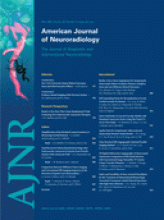S.F. Barrington, M.N. Maisey, R.L. Wahl, eds. New York: Cambridge University Press; 2006, 440 pages, 700 b/w halftones, 100 color halftones, 30 color line illustrations, $175.00.
This Atlas of Clinical Positron Emission Tomography, now in its 2nd edition, represents the cumulative experience of a number of American and European contributors, who have collaborated in updating us on this dynamically changing field. The advances in medical imaging technology have resulted in the fusion of images from different modalities, which now allows us to integrate anatomic, metabolic, and functional information. What is most important, the newer hybrid positron-emission tomography (PET)/CT systems better characterize pathologic processes, facilitating better diagnoses and improved patient management. The main goal of the authors was to provide the reader with a concise, easy-to-read, and well-illustrated book. The book publisher also has thoughtfully included an interactive DVD, which is clinically oriented toward the current utility of molecular imaging with PET.
The book is divided into 3 parts: Part I is an introduction to the principles and methods as well as normal variants and pitfalls. Part II consists of 14 chapters addressing the clinical applications of PET in oncology, and part III discusses the clinical applications of PET in neurology, psychiatry, cardiology, and infections and inflammations.
In the introductory chapters, which cover principles and methods, the authors lay the groundwork for a better understanding of PET/CT technology and discuss how various factors, including positron annihilation, coincidence detection, attenuation correction, scatter, and random coincidence events, influence the resulting image. The introductory chapters also include a basic review of detector design and modes of acquisition (2- and 3D) used in current PET/CT scanners. The practicing radiologist should be aware of these issues before embarking on the interpretation of studies. In addition, these chapters discuss the production methods and properties of various PET radionuclides, together with their kinetics and distribution and various acquisition protocols for whole-body, brain, and cardiac imaging. The introduction also reviews the normal physiologic uptake patterns and potential problems and pitfalls related to technical factors, which may result in artifacts and affect the interpretation.
Building on this foundation, the authors then discuss, in part II, the clinical applications in various settings, including those in oncology, which currently make up most of the clinical applications, and those in neurology, psychiatry, cardiology, and infection and inflammation.
In each of these chapters, the authors provide a basic understanding of the epidemiology, pathology, staging, and key management issues involved in relevant diseases. Excellent full-page illustrative examples complement clinical presentations, with PET/CT findings and key points highlighted. These are supplemented by ample additional references for further reading if needed.
A special advantage of the book is that the Atlas is supplemented by a DVD. This dynamic interactive DVD contains 30 especially selected PET/CT patients, who correspond by chapter and case number to cases in the book. The DVD is run by software from Hermes Medical Solutions (Stockholm, Sweden), which is intended for use on personal computers. Once loaded into the computer, the program launches automatically and includes a guided video and voice tour of the HERMES RAPID software. This allows a straightforward and easy way to view all the illustrations and take advantage of the interactive sessions.
The chapters covering neurology and psychiatry are of particular significance to a neuroradiology audience because PET scanners have provided an extensive amount of data, allowing us to better understand the functions of the brain. Despite these advances, there are, at this stage, relatively few clinical applications. Although various PET radiotracers have been investigated to explain more fully the relations between blood flow, blood volume, and oxygen extraction by using [15O] water, [15O] carbon monoxide, and [15O] oxygen gas tracers to study patients with stroke, fluorine-18 fluorodeoxyglucose (18F-FDG) is the most important radiotracer currently used clinically. The main clinical application of this agent in the evaluation of patients with stroke and brain tumors and in assessing the patterns of change in the various dementias is primarily covered in these chapters.
In the work-up of patients with epilepsy, the key management role of PET is in the lateralization of partial epilepsy when MR imaging findings are normal or conflict with electroencephalography (EEG) findings, to avoid invasive EEG, or for the placement of electrodes when invasive EEG is required. PET has been demonstrated to be also useful for prediction of the surgical outcomes and assistance in the management of pediatric “malignant” epilepsies. The Atlas provides a number of illustrative cases with accompanying clinical histories, PET image findings, and key points for discussion.
PET in the distribution of brain receptors (benzodiazepine, opioid monoamine oxidase-B) and histamine receptors in normal and various psychiatric diseases, though used for investigative studies, is not clinically used currently and is not covered in the Atlas.
Overall the book is an excellent resource as an atlas that rapidly brings the reader up to date on the current status of clinical applications of PET imaging. The book provides an integrated perspective of the key clinical issues, with an excellent introduction and background for each clinical disorder, together with the epidemiology, pathologic classification, staging, prognosis, and key management issues for which molecular imaging with PET can be helpful. The well-illustrated clinical examples are available and can be conveniently reviewed both in hard copy and in DVD format. Therefore, the book is an excellent resource for radiologists and residents in training who are interested in the growing field of molecular imaging. Its main value to the neuroradiologist is for understanding the role of PET in head and neck cancers and in patients with dementia, stroke, epilepsy, and infections of the brain.

- Copyright © American Society of Neuroradiology












